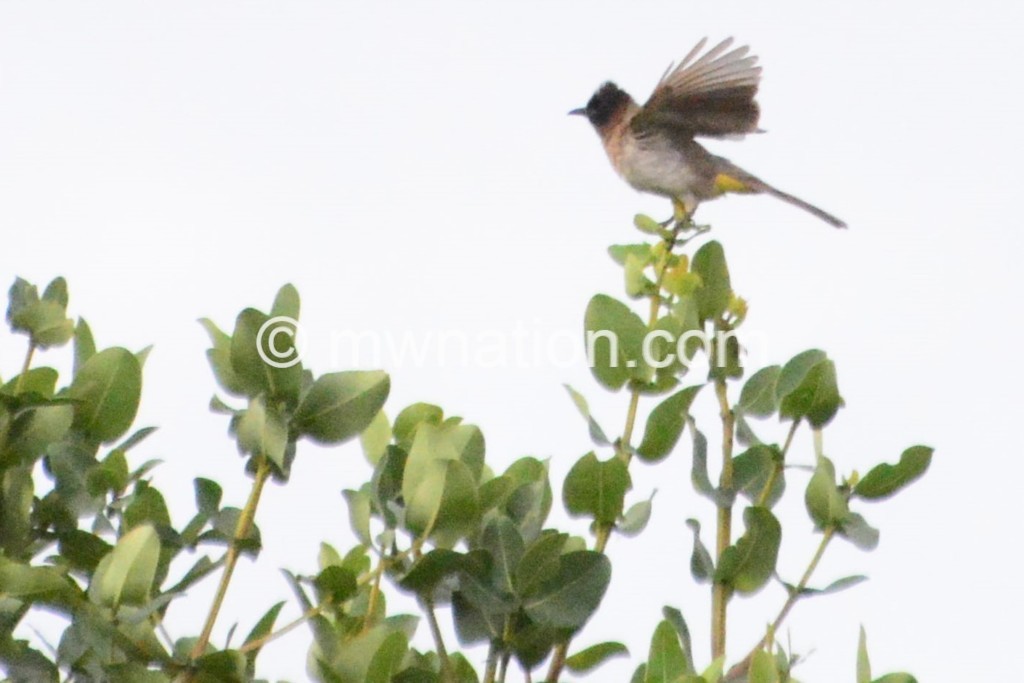Dzalanyama: The bird haven
The deep and low cry from a hornbill (namng’omba) served as a welcome into the Dzalanyama Forest on one wet, warm morning. It was as though the hornbill sensed that there were people pursuing it to have a good look at it as the sound continued being distant as if it was walking away to maintain distance between the people and itself.
Then, came the light shrill from a small group of swallow-tailed bee eater as they jumped from one branch to another in nearby trees, probably as the birds were enjoying a snack of bees flying on the yellow flowers. Theirs was a good spectacle as they flushed their yellow neck front and glittering greenish wings with a black line from a black beak passing through the eye line to the ears.

As the hornbill sounds faded into the distance two sizable birds flew overhead and rested a couple of metres away and started cooing simultaneously, revealing their identities. They were emerald crested doves, together singing in harmony while lowering and raising their heads, as they faced each other from branches a few centimetres apart.
All this and sounds from other birds would reach into a crescendo resonating through the forest in one beautiful chorus of music whose genre is yet to be named. Then the music would get lower and lower, as the bird types would stop singing one by one until it reached almost dead silence for a few minutes where one would hear the crackling crepitation of cicada miles away.
Jim Katengu, tour guide and bird expert from Land and Lake Safari used his expertise to call birds to near-by trees. He can mimic almost any type of bird sound good enough to fool the real bird into getting closer or at least call back and reveal their location for the benefit of all watchers.
According to him Malawi has over 650 bird species which attract birding tourists from all over the world more especially those from the West. In his view birding tourism is generating revenue into the country and has potential of becoming bigger than it is at the moment.
He, however, pointed out that the birdy tourism faces a threat, due to massive deforestation which has led birds to fly to other forest reserves for good.
According to Katengu, in his career he has seen birds moving from one area to another in search of a better environment to match their lifestyle.
Said Katengu: “Migrating birds have a habit of coming back to a particular forest or even more precisely a particular tree when in season but when such trees are cut off they are forced to go to another forest location and if the damage to the natural environment continues, as it is at the moment there is danger of losing such birds altogether.
“As a tourist attraction niche, birds need to be protected and we need to do something fast so that we don’t lose out in that area.”
Director of tourism in the Department of Tourism, Isaac Katopola, in an interview emphasized that tourism isn’t only about primary attraction, secondary attraction but also niches of attraction such as birding as such tour operators need to put more emphasis on such niches.
He acknowledged that birding is an area that is yet to be explored fully yet it has a lot of potential. In his words, looking at the interest tourists show there is need for the operators to move fast and benefit from birding.
Said Katopola: “Birding is a big attraction although it is largely just seen as a niche within the attraction. It is quite a big market especially in the western tourists market.”
He said that there are plans to conduct a survey of visitors and their areas of most attraction in the country to be funded by AfDB and it is anticipated that from that birding is likely to rank highly.





